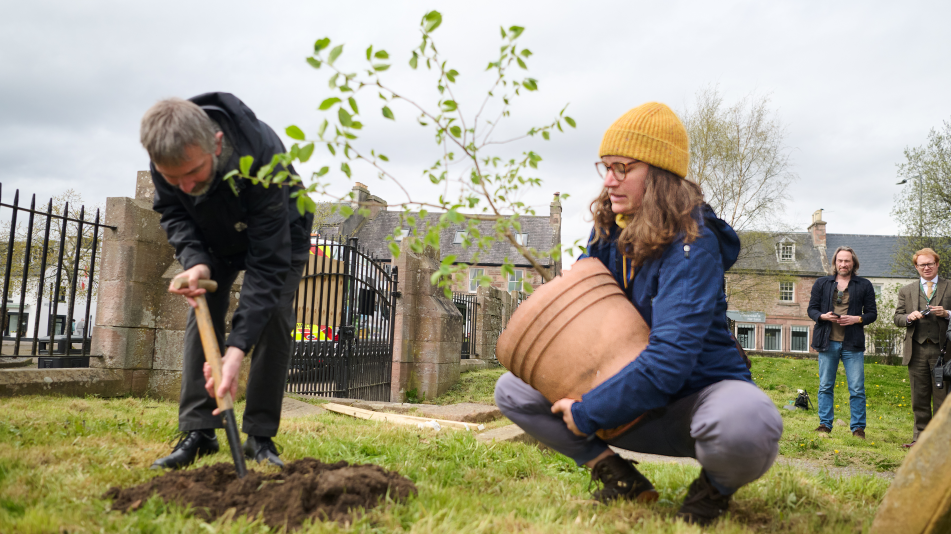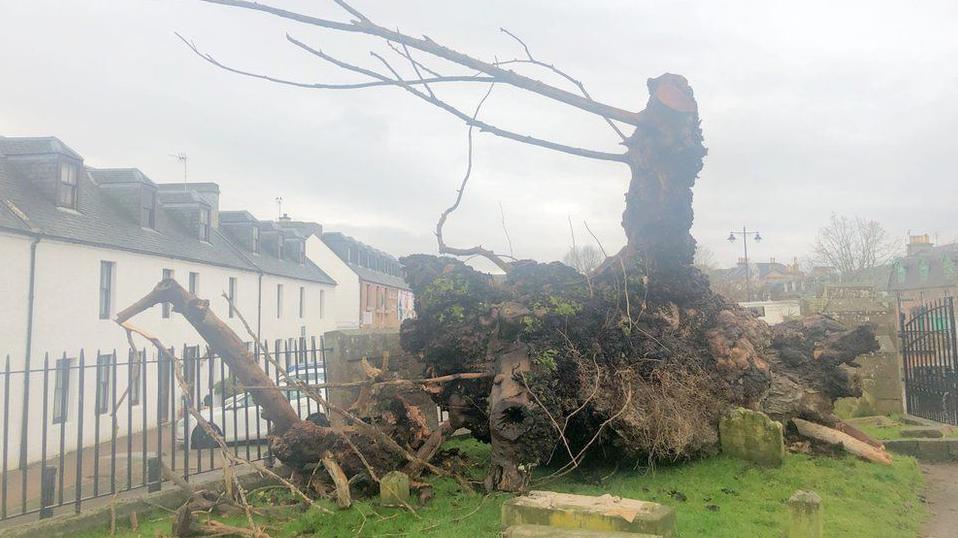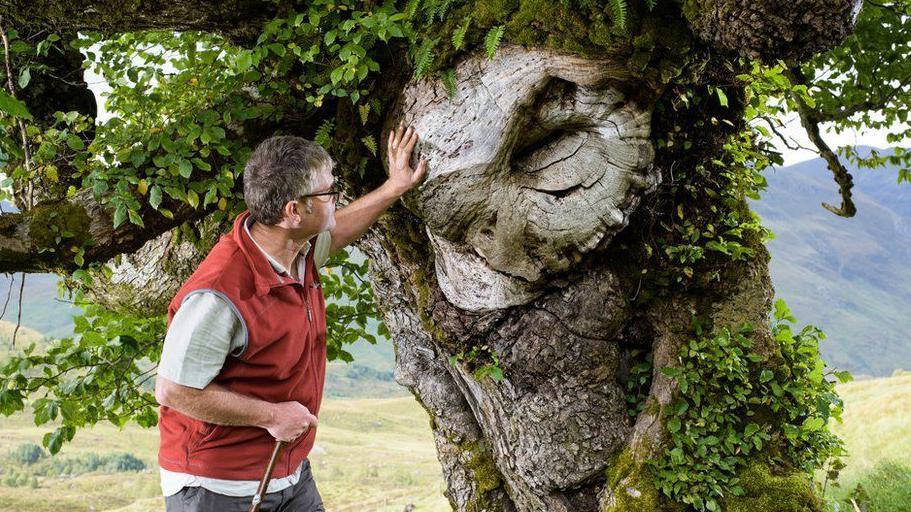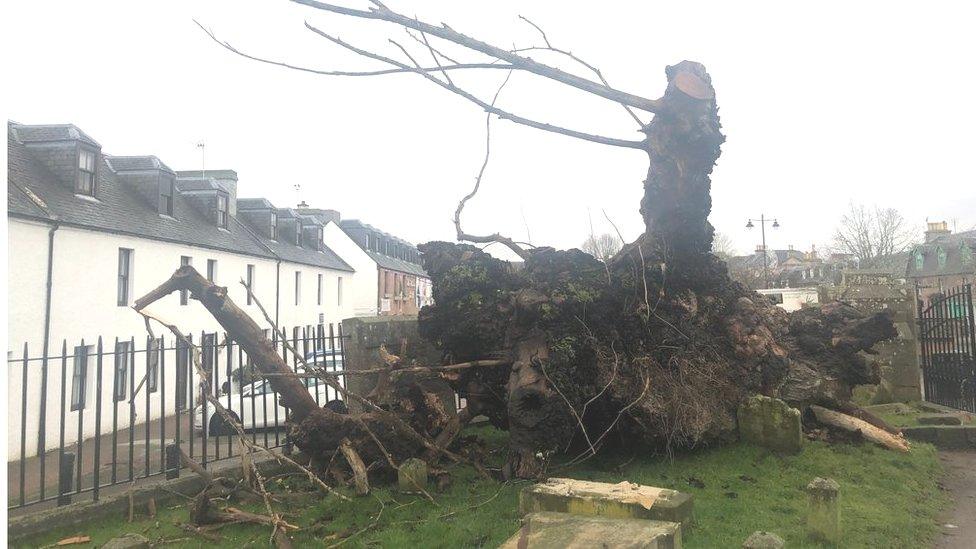New life at site of 'Europe's oldest' wych elm

Saplings have been planted where a tree had stood in Beauly for more than 800 years
- Published
A sapling believed to be from "Europe's oldest" wych elm has been planted at the site of the ancient tree.
The Beauly Elm was more than 800 years old and had stood in the Highland village of Beauly until it succumbed to Dutch elm disease and fell over last year.
The sapling was recovered and has been in the care of Royal Botanic Garden Edinburgh (RBGE) as part of its Scottish Plant Recovery project.
It has now been replanted, along with a second sapling that has been bred to be disease resistant.
Historic Environment Scotland (HES) previously laser-scanned the Beauly Elm as part of work to document ancient Scottish trees.
It was believed to have been the oldest of its kind in Europe, and is described in medieval documents as a boundary marker for land granted to monks who established a priory in Beauly.
Dutch elm disease is a fungal infection spread by tiny bark beetles. It can rapidly wither and kill healthy trees.
RBGE has been growing disease-resistant saplings for planting at locations across Scotland.
Other sites include one near an elm dubbed the Last Ent of Glen Affric.

HES laser scanned the Beauly Elm before its demise
Sarah Franklin, of HES, said: “The Beauly Elm was an iconic cultural asset and piece of heritage in its own right.
"Whilst a sad loss, its story has been able to live on thanks to our digital documentation and with the preservation of some pieces of the timber gifted to the local community and some kept within the HES collections."

The Beauly Elm fell over last year
Dr Max Coleman, of RBGE, said the second, specially bred, sapling was the offspring of mature elms in the Scottish Borders.
He added: "Our scientists and horticulturists at the Royal Botanic Garden Edinburgh selectively bred seedlings from these super survivors and our hope is that the young tree will inherit these beneficial traits from its parents and, in time, replace the original Beauly Elm."
- Published16 April 2024

- Published5 January 2023
